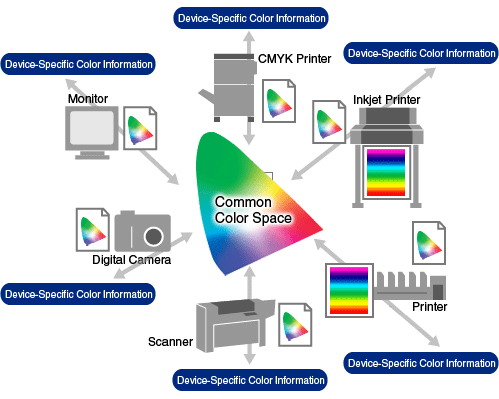Color Management Resources
Color Management in Practice - Color Management and Improving Work Efficiency
- Security
- ATC Resources
- Monitor Basics in Plain English
- Videos
- Color Management Resources
- The Breath of Living Creatures - takayuki-maekawa
- Visit to the EIZO Headquarters – ColorEdge Factory Tour
- Exhibit of Virtual Human Saya - ColorEdge as an Eye to the Artist
- A Professional Photographer’s Visit to the EIZO Factory
- How to Read the ColorEdge Factory Report
- The Winners of the Academy Sci-Tech Award – ColorEdge CG Series Developer Interview
- Color Management for Creators – A Comprehensive Guide
- Color Management for Creators – Mobile Devices
- Award-Winning Calibration Sensor Technology
- Hardware vs Software Calibration
- EIZO Colourclass
- Color Management for Creators – Web Browser Edition
- Color Management for Creators – ICC Profiles
- Adorable Kitties on an EIZO ColorEdge: A Professional Monitor Great for Everyone
- Choosing the Color Gamut - Adobe RGB or sRGB?
- Age of HDR
- The Ins and Outs of HDR
- Color Management for 3DCG
- EIZO ColorEdge Ambassador Q&A: 5 Tips for Hobbyist Photography
- Quick Color Match and ColorNavigator
- Certifications for the Graphics Market
- One Lesson I Iearned in Photography
- How to Color Match Your ColorEdge Monitor and Photo Prints
- Color Management in Practice
- Choosing the Right Monitors for a Color Management System
- Monitor Calibration
- Healthcare Resources
Color Management and Improving Work Efficiency
Keeping Colors Consistent Throughout the Workflow Is Ideal
These days, the workflow of printing is digitalized and printing processes have become simpler and more efficient. Ideally, we want to be able to check the final printing quality during the prepress process. It is therefore important to ensure that colors stay the same at each stage throughout the workflow and this is why so much attention is placed on color management today.
As the same digital data is used during the course of the workflow, it is natural to assume there will be no differences in the color information at each process. However in reality, differences do arise; different devices reproduce colors differently as do the different monitors used in each process. This means that the color we see is not always the same during each process.

In Practice, Colors Do Not Match Perfectly Between Different Devices
One of the reasons for this is that input/output devices such as scanners, monitors and color printers have differing color generation methods and differing color reproduction areas for color reproduction. As a result, even though the same data is used, the color that is reproduced by the devices will vary. In other words, it is theoretically impossible to "perfectly" match colors between different devices.
Even in the case of monitors, each one has its own color reproduction characteristics (differences) and other peculiarities such as age deterioration. Due to these factors, it is difficult to get colors to display exactly the same way on multiple monitors.
Alas, in a professional workflow environment that requires stringent color management, if there is too much discrepancy in color reproduction between devices, there will be a lack of certainty of whether the end result will yield the desired color. Moreover, this problem can be compounded by differences in understanding of color from one worker to another, which can significantly hinder the result.
By using a shared color space, color management can be conducted uniformly from the initial stage of the workflow. The essential role of a color management system is to absorb both the differences of the various workplace settings (client, designer, prepress and printer) and the differences between devices, and offer an environment where the same data always looks the same during checking.
